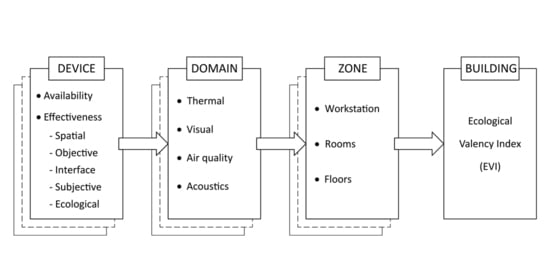An Occupant-Centric Theory of Building Control Systems and Their User Interfaces
Abstract
:1. Objective
2. About Building Controls
3. Controllability as an Indoor-Environmentally Relevant Quality Attribute of Buildings
4. Ecological Valency as the Primary Theoretical Construct for the Characterization of Indoor Environments’ Responsiveness to Occupants’ Needs
- The EV of natural outdoor environments frequently does not match people’s EP: Outdoor environments may be too hot, too cold, excessively bright, windy, subject to precipitation, loud, exposed, and unsafe. Buildings are suggested to serve as a protective shell, to filter out adverse influences, and to provide indoor environments that are amenable to people’s needs and requirements.
- Certain elements and features of buildings (particularly, building envelopes) provide basic control opportunities with regard to a number of the above listed forces, factors, and potential treats such as rain and wind. This is performed, however, only to a certain degree: Passive devices such as windows provide some measure of control of view, daylight, and air flow. However, further features and devices—both passive and active—are necessary to provide occupants a higher level of control over ambient conditions.
- Buildings’ passive and active control devices have the potential to increase occupants’ control over the conditions that can be maintained in indoor environments. Logically speaking, if occupants are given the opportunity to operate these devices, they are more likely to bring about conditions that are in line with their needs.
- The spectrum of available means to modulate the dimensions and levels of exposure can be suggested to constitute a building’s indoor-environmentally relevant EV.
- For the EV potential to become effective, occupants must be able to recognize and operate the corresponding means and devices. In other words, these need to be identified as meaningful.
5. Toward a Formalism for the Operationalization of EV
- Hygro-thermal (ambient air and radiant temperatures and relative humidity);
- Indoor air quality (fresh air volume flow);
- Visual (daylight and electrical lighting).
- The spatial resolution of the control devices’ target zones and occupants’ control over the conditions in their immediate surroundings;
- The usability of the control devices and the quality of their user interface;
- The objective effectiveness of the control device in fulfilling the intended task in a timely and sufficient manner;
- The level of the effectiveness of the control devices as subjectively perceived by the occupants.
6. Estimation of EVI: An Exploratory Exercise
6.1. Protocol Design
6.2. Protocol Test
7. Conclusions
Author Contributions
Funding
Institutional Review Board Statement
Informed Consent Statement
Data Availability Statement
Acknowledgments
Conflicts of Interest
Abbreviations
| EV | Ecological Valency |
| EP | Ecological Potency |
| EVI | Ecological Valency Index |
| EVIDi | Ecological Valency Index for a device |
| EVISj | Ecological Valency Index for a space |
| EVIB | Ecological Valency Index for a building |
| C | Quality criterion |
| W | Weighting factor |
| BT | Building type |
| RF | Room function |
| S | System |
| IF | Interface |
References
- 2020 ASHRAE Handbook: Heating, Ventilating, and Air-Conditioning Systems and Equipment; ASHRAE: Atlanta, GA, USA, 2020; ISBN 1947192523.
- Rea, M.S. The IESNA Lighting Handbook: Reference & Application, 9th ed.; Rea, M.S., Ed.; Illuminating Engineering Society of North America: New York, NY, USA, 2000; ISBN 0879951508. [Google Scholar]
- ASHRAE. Thermal Environmental Conditions for Human Occupancy; ASHRAE Standard 55-2017; ASHRAE: Peachtree Corners, GA, USA, 2017. [Google Scholar]
- International Organization for Standardization. Ergonomics of the Thermal Environment—Analytical Determination and Interpretation of Thermal Comfort Using Calculation of the PMV and PPD Indices and Local Thermal Comfort Criteria; ISO Standard 7730:2005; International Organization for Standardization: Geneva, Switzerland, 2005. [Google Scholar]
- International Organization for Standardization. Lighting of Indoor Work Places; ISO Standard 8995:2002; International Organization for Standardization: Geneva, Switzerland, 2002. [Google Scholar]
- ÖNORM. Light and Lighting—Lighting of Work Places—Part 1: Indoor Work Places; BSI Standard EN12464-1; The British Standards Institution: London, UK, 2019. [Google Scholar]
- Djongyang, N.; Tchinda, R.; Njomo, D. Thermal comfort: A review paper. Renew. Sustain. Energy Rev. 2010, 14, 2626–2640. [Google Scholar] [CrossRef]
- van Hoof, J.; Mazej, M.; Hensen, J.L.M. Thermal comfort: Research and practice. Front. Biosci. 2010, 15, 765–788. [Google Scholar] [CrossRef] [PubMed] [Green Version]
- Rawal, R.; Schweiker, M.; Kazanci, O.B.; Vardhan, V.; Jin, Q.; Duanmu, L. Personal comfort systems: A review on comfort, energy, and economics. Energy Build. 2020, 214, 109858. [Google Scholar] [CrossRef]
- Rissetto, R.; Schweiker, M.; Wagner, A. Personalized ceiling fans: Effects of air motion, air direction and personal control on thermal comfort. Energy Build. 2021, 235, 110721. [Google Scholar] [CrossRef]
- Kim, J.; Bauman, F.; Raftery, P.; Arens, E.; Zhang, H.; Fierro, G.; Andersen, M.; Culler, D. Occupant comfort and behavior: High-resolution data from a 6-month field study of personal comfort systems with 37 real office workers. Build. Environ. 2019, 148, 348–360. [Google Scholar] [CrossRef]
- André, M.; de Vecchi, R.; Lamberts, R. User-centered environmental control: A review of current findings on personal conditioning systems and personal comfort models. Energy Build. 2020, 222, 110011. [Google Scholar] [CrossRef]
- Friedland, B. Control System Design: An Introduction to State-Space Methods; Dover Publications: Mineola, NY, USA, 2005; ISBN 0486442780. [Google Scholar]
- Zabczyk, J. Mathematical Control Theory: An Introduction, 2nd ed.; Birkhäuser: Cham, Switzerland, 2020; ISBN 3030447766. [Google Scholar]
- Mahdavi, A. Aspects of self-aware buildings. Int. J. Des. Sci. Technol. 2001, 9, 35–52. [Google Scholar]
- Mahdavi, A. A combined product-process model for building systems control. In eWork and eBusiness in Architecture, Engineering and Construction, Proceedings of the 5th ECPPM Conference, Istanbul, Turkey, 8–10 September 2004; A.A. Balkema Publishers: Rotterdam, The Netherlands, 2004; pp. 127–134. [Google Scholar]
- Mahdavi, A. Self-organizing models for sentient buildings. In Advanced Building Simulation; Malkawi, A.M., Ed.; Spon: New York, NY, USA, 2004; ISBN 9780203073674. [Google Scholar]
- Mahdavi, A.; Schuß, M. Intelligent zone controllers: A scalable approach to simulation-supported building systems control. In Proceedings of the BS2013: 13th Conference of International Building Performance Simulation Association, Chambéry, France, 26–28 August 2013. [Google Scholar]
- Heydarian, A.; McIlvennie, C.; Arpan, L.; Yousefi, S.; Syndicus, M.; Schweiker, M.; Jazizadeh, F.; Rissetto, R.; Pisello, A.L.; Piselli, C.; et al. What drives our behaviors in buildings? A review on occupant interactions with building systems from the lens of behavioral theories. Build. Environ. 2020, 179, 106928. [Google Scholar] [CrossRef]
- Ajzen, I. From intentions to actions: A theory of planned behavior. In Action Control; Kuhl, J., Beckmann, J., Eds.; Springer: Berlin/Heidelberg, Germany, 1985; pp. 11–39. ISBN 978-3-642-69748-7. [Google Scholar]
- Glanz, K.; Rimer, B.K.; Viswanath, K. Health Behavior and Health Education: Theory, Research, and Practice; John Wiley & Sons: Hoboken, NJ, USA, 2008; ISBN 9780470432488. [Google Scholar]
- Robinson, J. Triandis’ Theory of Interpersonal Behaviour in Understanding Software Piracy Behaviour in the South African Context. 2010. Available online: http://hdl.handle.net/10539/8377URL (accessed on 4 August 2021).
- Triandis, H.C. Values, Attitudes, and Interpersonal Behavior. Nebr. Symp. Motiv. 1980, 27, 195–259. [Google Scholar]
- Maslow, A.H. A theory of human motivation. Psychol. Rev. 1943, 50, 370–396. [Google Scholar] [CrossRef] [Green Version]
- Gram-Hanssen, K. Standby consumption in households analyzed with a practice theory approach. J. Ind. Ecol. 2010, 14, 150–165. [Google Scholar] [CrossRef]
- Reckwitz, A. Toward a theory of social practices. Eur. J. Soc. Theory 2002, 5, 243–263. [Google Scholar] [CrossRef]
- Shove, E.; Pantzar, M.; Watson, M. The Dynamics of Social Practice: Everyday Life and How it Changes; SAGE: Newcastle upon Tyne, UK, 2012; ISBN 9781446258170. [Google Scholar]
- Shove, E.; Walker, G. What is energy for? Social practice and energy demand. Theory Cult. Soc. 2014, 31, 41–58. [Google Scholar] [CrossRef] [Green Version]
- Mahdavi, A.; Teufl, H.; Berger, C. Application of the ecological valency concept to buildings’ environmental control systems. IOP Conf. Ser. Mater. Sci. Eng. 2019, 609, 42022. [Google Scholar] [CrossRef] [Green Version]
- Mahdavi, A.; Berger, C. An inquiry into the certification potential of built environments’ affordance. In Proceedings of the CLIMA 2019—13th HVAC World Congress, Bucharest, Romania, 26–29 May 2019. [Google Scholar]
- Knötig, H. Human Ecology—The exact science of the interrelationships between Homo sapiens and the outside world surrounding this living and thinking being. In Proceedings of the Sixth Meeting of the Society for Human Ecology “Human Ecology: Crossing Boundaries”, Snowbird, UT, USA, 2–4 October 1992. [Google Scholar]
- Knötig, H. Some essentials of the Vienna School of Human Ecology. In Proceedings of the 1992 Birmingham Symposium “Austrian and British Efforts in Human Ecology” (Birmingham, UK); Archivum Oecologiae Hominis: Vienna, Austria, 1992. [Google Scholar]
- Mahdavi, A. The human factor in sustainable architecture. In Low Energy Low Carbon Architecture: Recent Advances & Future Directions; Taylor & Francis: Abingdon, UK, 2016. [Google Scholar]
- Mahdavi, A. Approaches to noise control: A human ecological perspective. In Proceedings of the NOISE-CON 96, Bellevue, WA, USA, 29 September–2 October 1996; pp. 649–654. [Google Scholar]
- Mahdavi, A. A human ecological view of “traditional” architecture. Hum. Ecol. Rev. 1996, 3, 108–114. [Google Scholar]
- Uexküll, J. Kompositionslehre der Natur; Propyläen: Frankfurt am Main, Germany, 1920. [Google Scholar]
- Gibson, J. The theory of affordances. In Perceiving, Acting and Knowing: Toward an Ecological Psychology; Shaw, R., Bransford, J.D., Eds.; Lawrence Erlbaum Associates: Hillsdale, NJ, USA, 1977; pp. 67–82. [Google Scholar]
- Gibson, J. The Ecological Approach to Visual Perception; Houghton Mifflin: Boston, MA, USA, 1979. [Google Scholar]
- Norman, D.A. The Design of Everyday Things; Basic Books: New York, NY, USA, 2013; ISBN 9780465050659. [Google Scholar]
- Tweed, C. Highlighting the affordances of designs. In Computer Aided Architectural Design Futures 2001; de Vries, B., van Leeuwen, J., Achten, H., Eds.; Springer: Dordrecht, The Netherlands, 2001; pp. 681–696. ISBN 978-94-010-3843-0. [Google Scholar]
- Mahdavi, A. Can we quantify the ecological valency of built environments? Appl. Mech. Mater. 2019, 887, 369–373. [Google Scholar] [CrossRef]
- Li, Z.; Zhang, Q.; Fan, F.; Shen, S. A comprehensive comfort assessment method for indoor environmental quality in university open-plan offices in severe cold regions. Build. Environ. 2021, 197, 107845. [Google Scholar] [CrossRef]
- Buratti, C.; Belloni, E.; Merli, F.; Ricciardi, P. A new index combining thermal, acoustic, and visual comfort of moderate environments in temperate climates. Build. Environ. 2018, 139, 27–37. [Google Scholar] [CrossRef]
- Mahdavi, A.; Teufl, H.; Berger, C. A structured approach to the evaluation of indoor environments´ecological valency. Int. J. Vent. 2020. [Google Scholar] [CrossRef]
- Teufl, H.; Berger, C.; Mahdavi, A. Aspects of a building affordance assessment protocol. In Proceedings of the 16th Conference of the International Society of Indoor Air Quality & Climate (Indoor Air 2020), Seoul, Korea, 1–5 November 2020. [Google Scholar]
- Mahdavi, A.; Teufl, H. Can we measure buildings’ affordance? In Proceedings of the Healthy Buildings Europe, Oslo, Norway, 21–23 June 2021. [Google Scholar]


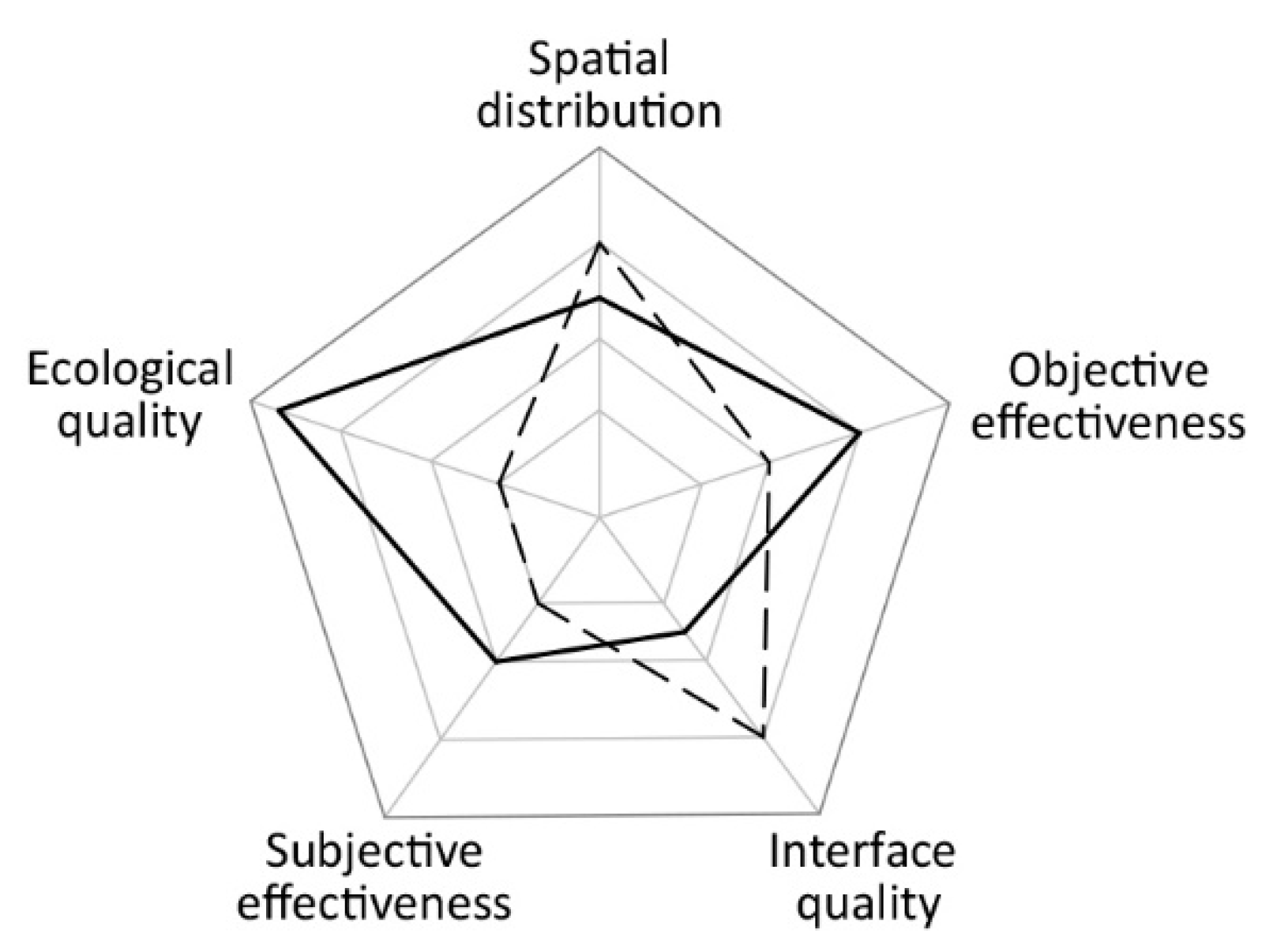
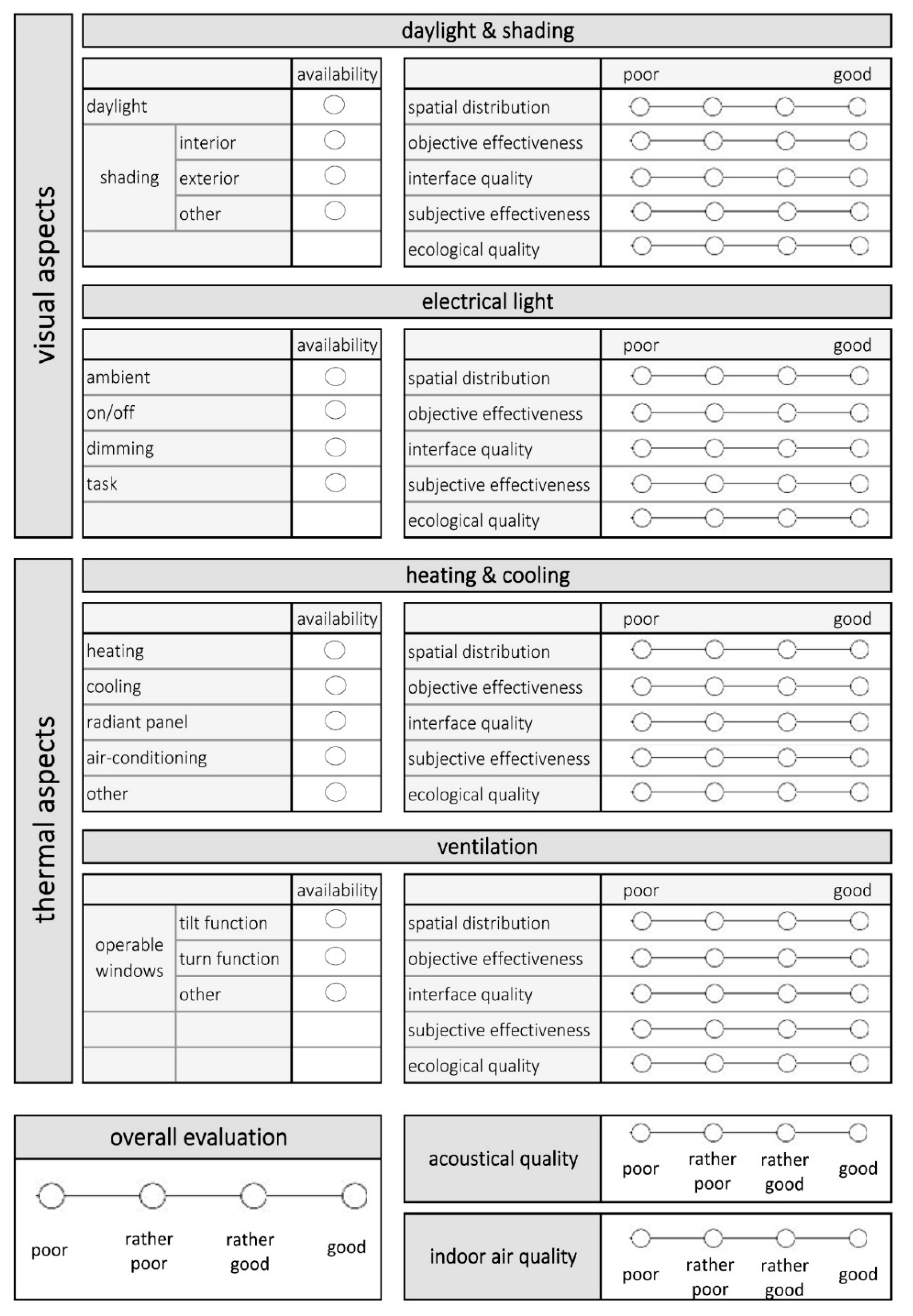
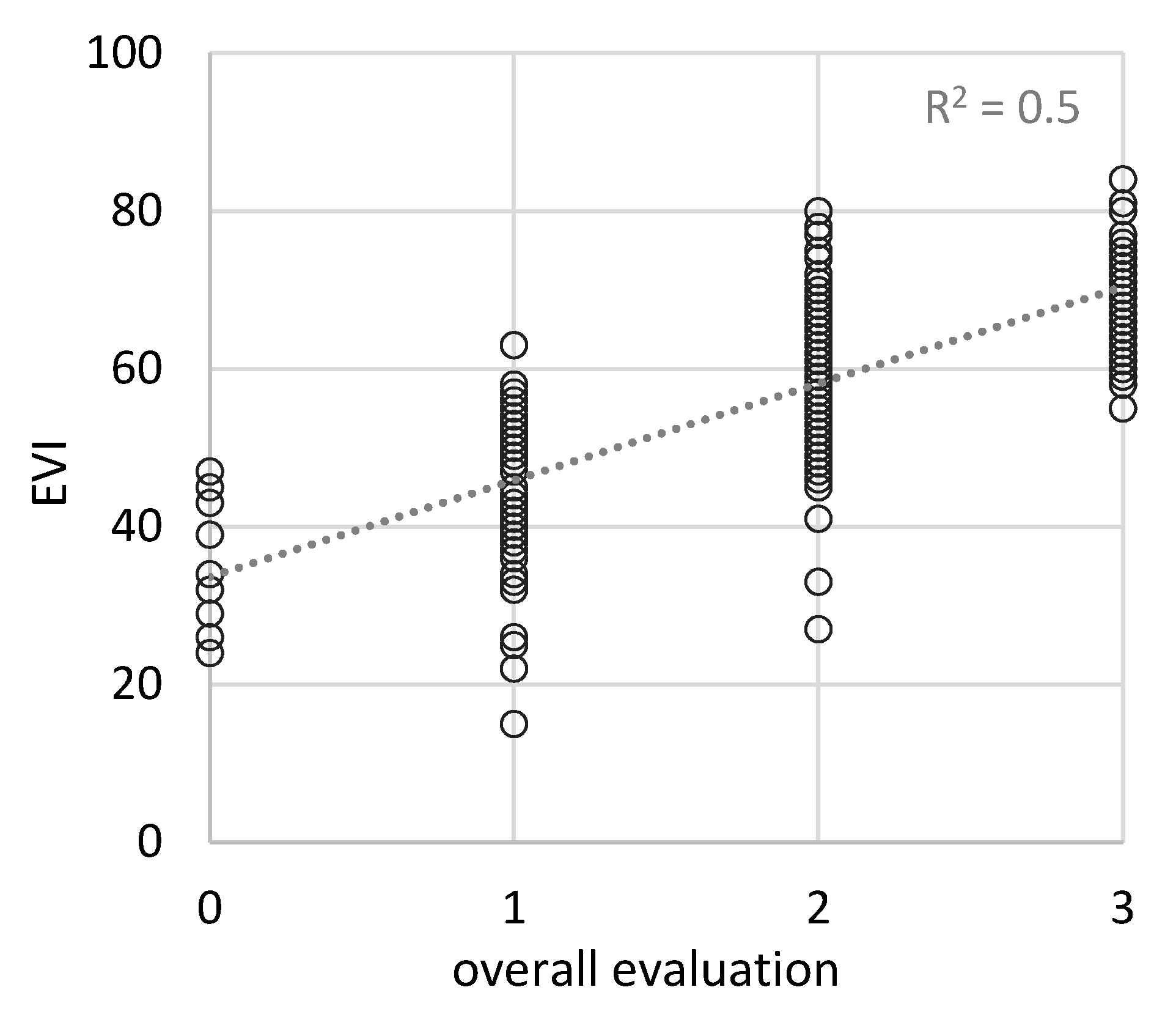
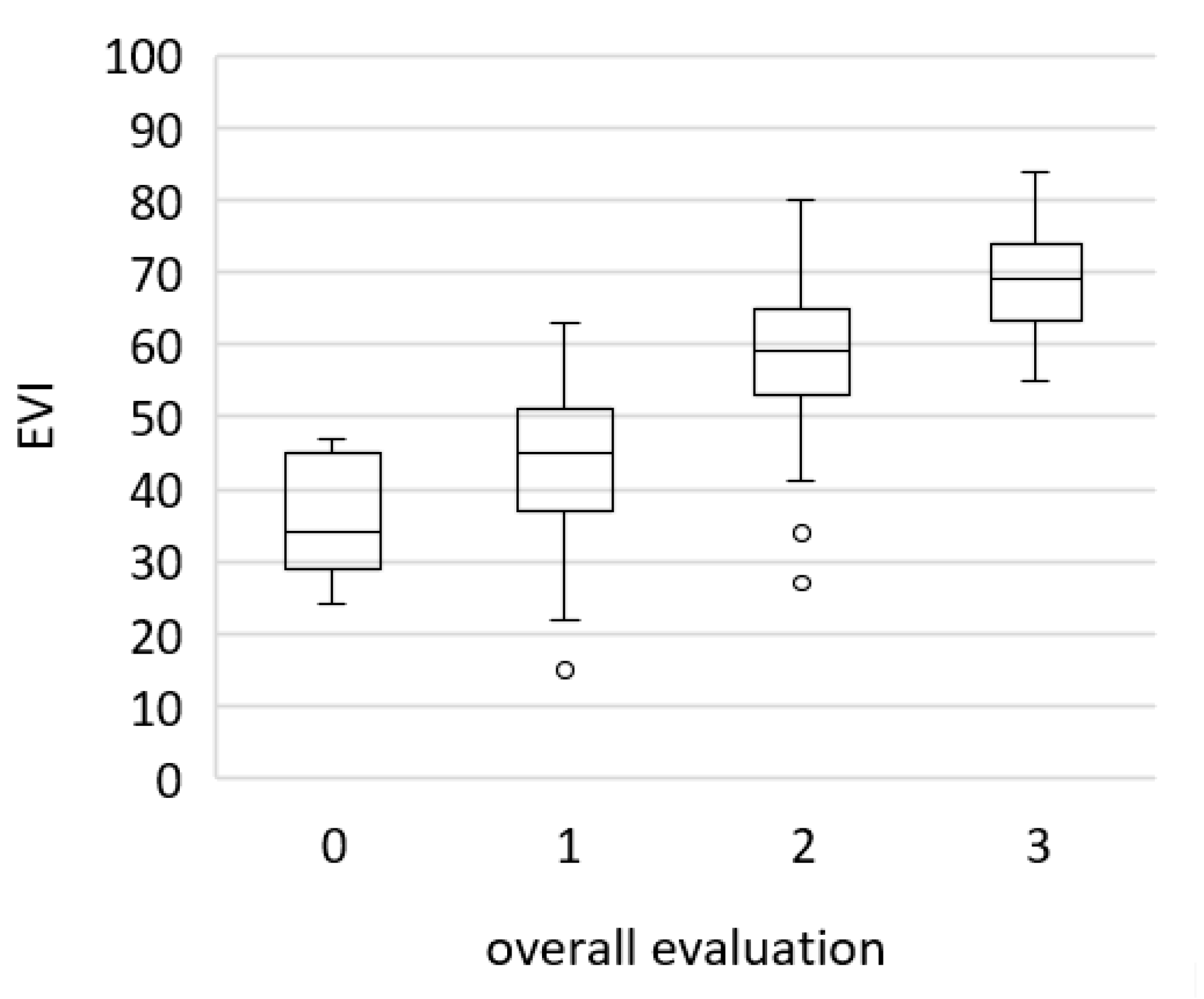
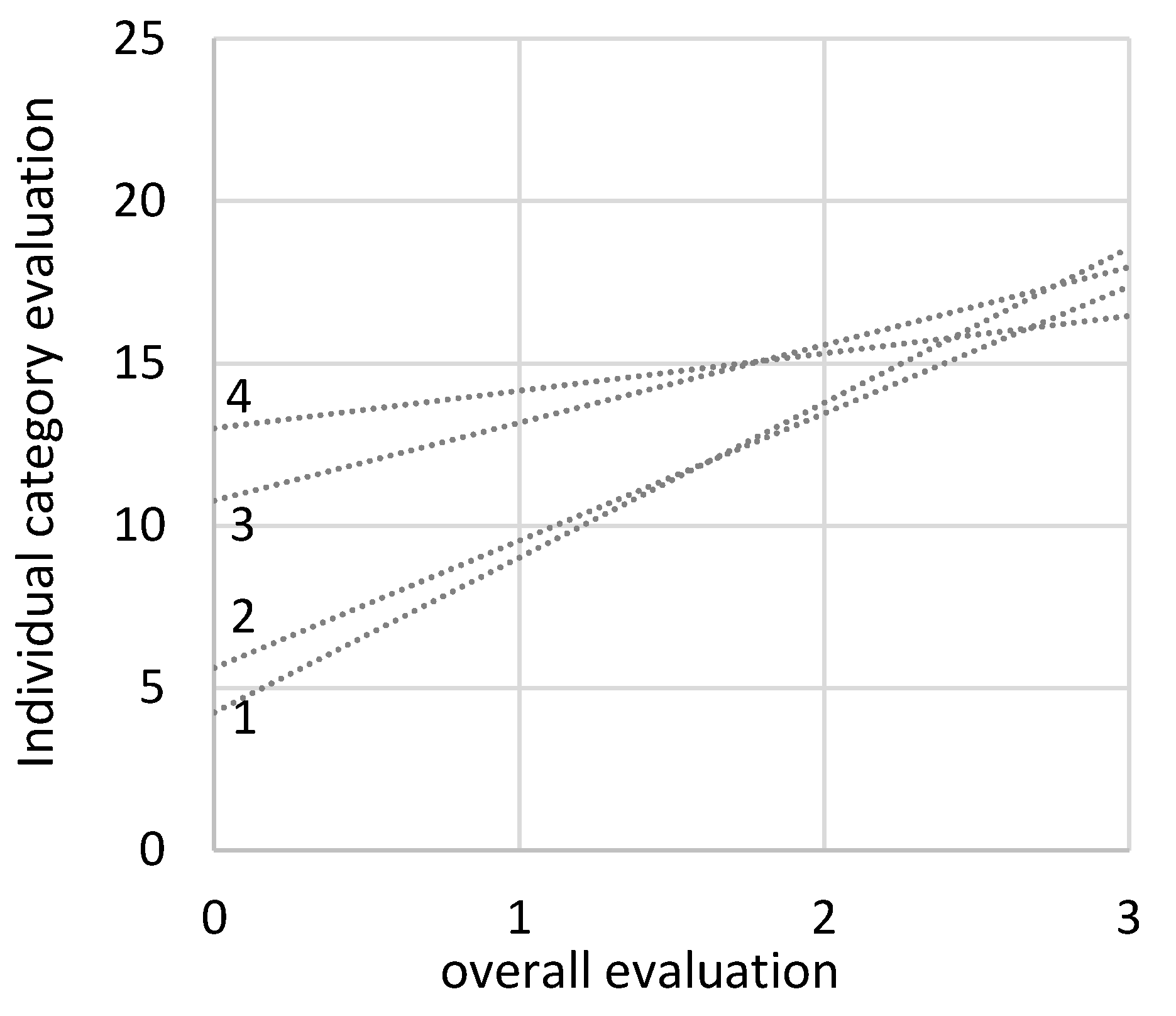
| Term | Description | Illustrative Instance |
|---|---|---|
| Controller | Agent that sets control actions | People, software (algorithm) |
| Control action | Changing the state (position) of a control device’s actuator | Opening a window, switching lights on/off |
| Actuator | Component of a device that instantiates the device state change | Valve, dimmer, people |
| Control device | A technical element or system, for which its purpose is to modulate that mass/energy transfer to/from a control zone | Window, luminaire, HVAC |
| Control device terminal | The component of a control device that acts as its physical interface to the control zone | Radiator, diffuser |
| Control objective | To keep the control parameter in a control zone in a given range | Regulation of air temperature or illuminance levels in a control zone |
| Control parameter | Measurable proxy of a control zone’s relevant state | Air temperature, relative humidity, CO2 concentration, illuminance |
| Control zone | Spatial target domain of the control action | Workstation, room, floor, building |
| Sensor | Reports the current zone state in terms of a control parameter’s value | Thermometer, photometer |
| Devices | Window | Exterior Shades | Interior Shades | Radiator | Radiant Ceiling | Air Diffusers | Humidifier | Luminaire | Fan |
|---|---|---|---|---|---|---|---|---|---|
 |  |  |  |  |  |  | 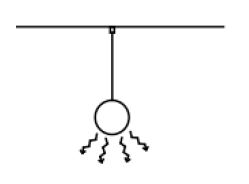 | 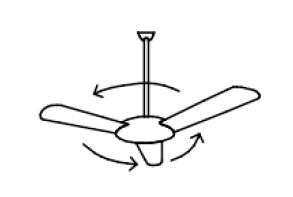 | |
| Radiative energy modulation | ○ | ✓ | ○ | ✓ | ✓ | − | − | ○ | − |
| Lighting modulation | ○ | ○ | ✓ | − | − | − | − | ✓ | − |
| Convective energy modulation | ○ | − | − | ○ | ○ | ✓ | − | − | − |
| Air flow modulation | ✓ | − | − | − | − | ✓ | − | − | ✓ |
| Humidity Control | ○ | − | − | − | − | ✓ | ✓ | − | − |
| Daylight and Shading | Electrical Light | Heating and Cooling | Ventilation | ||||
|---|---|---|---|---|---|---|---|
| daylight | 3 | ambient | 2 | heating/cooling | 3/3 | tilt function | 3 |
| interior shading | 2 | on/off | 2 | air-conditioning | 3 | turn function | 3 |
| exterior shading | 2 | dimming | 2 | radiant panel | 3 | other | 2 |
| other | 2 | task | 2 | other | 3 | ||
| Building Type | Number of Evaluated Rooms | Sum |
|---|---|---|
| Office | Office space (176), meeting room (28), kitchen (58) | 262 |
| Residential | Living room (5), kitchen (11), bedroom (15), bathroom (6), storage room (2), hallway (1) | 40 |
| Educational | Lecture room (17), study room (10), computer room (8) | 35 |
| Sport | Training area (3), changing room (4), bathroom (2) | 9 |
| Gastronomy | Eating area (3) | 3 |
| Health care | Patients room (1), staff room (1), meeting room (1) | 3 |
| Library | Reading area (4) | 4 |
Publisher’s Note: MDPI stays neutral with regard to jurisdictional claims in published maps and institutional affiliations. |
© 2021 by the authors. Licensee MDPI, Basel, Switzerland. This article is an open access article distributed under the terms and conditions of the Creative Commons Attribution (CC BY) license (https://creativecommons.org/licenses/by/4.0/).
Share and Cite
Mahdavi, A.; Teufl, H.; Berger, C. An Occupant-Centric Theory of Building Control Systems and Their User Interfaces. Energies 2021, 14, 4788. https://doi.org/10.3390/en14164788
Mahdavi A, Teufl H, Berger C. An Occupant-Centric Theory of Building Control Systems and Their User Interfaces. Energies. 2021; 14(16):4788. https://doi.org/10.3390/en14164788
Chicago/Turabian StyleMahdavi, Ardeshir, Helene Teufl, and Christiane Berger. 2021. "An Occupant-Centric Theory of Building Control Systems and Their User Interfaces" Energies 14, no. 16: 4788. https://doi.org/10.3390/en14164788
APA StyleMahdavi, A., Teufl, H., & Berger, C. (2021). An Occupant-Centric Theory of Building Control Systems and Their User Interfaces. Energies, 14(16), 4788. https://doi.org/10.3390/en14164788




